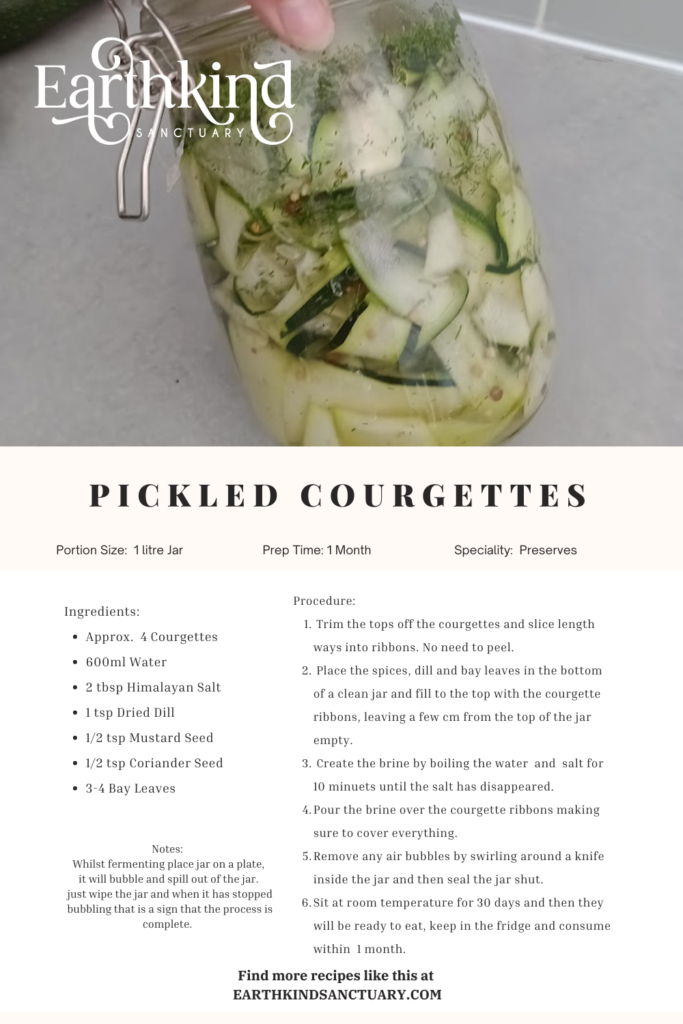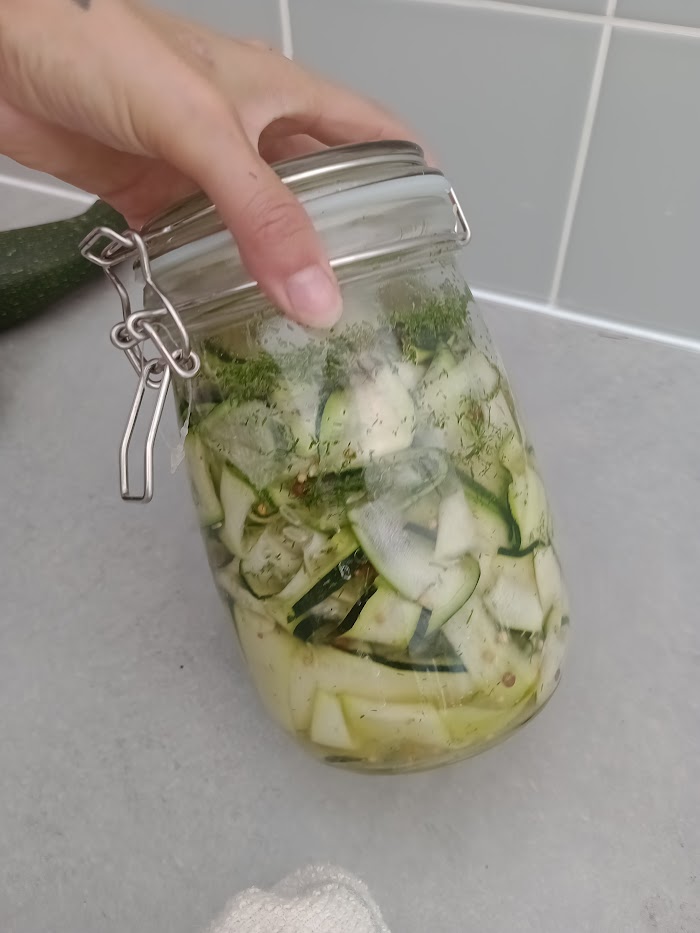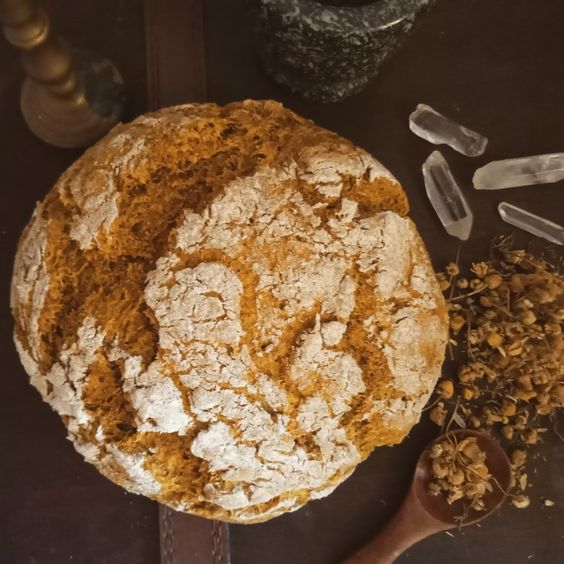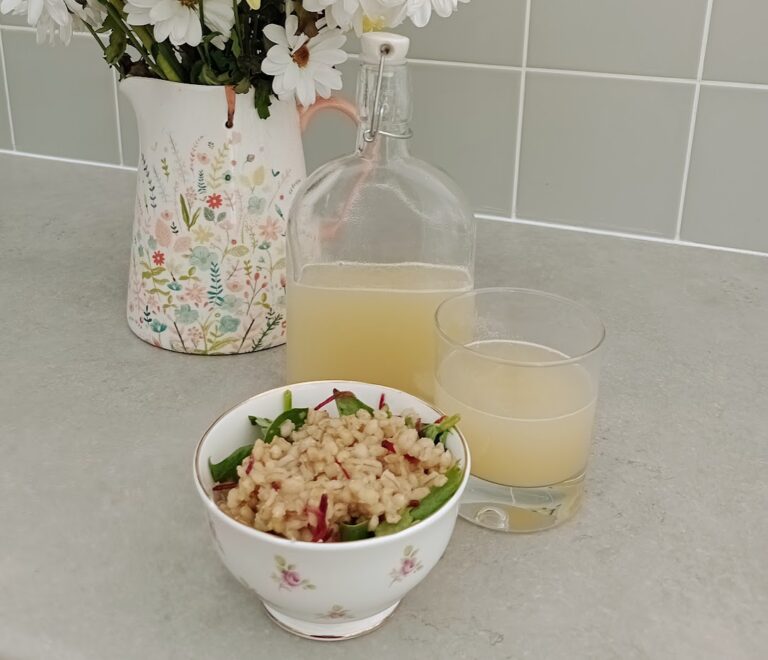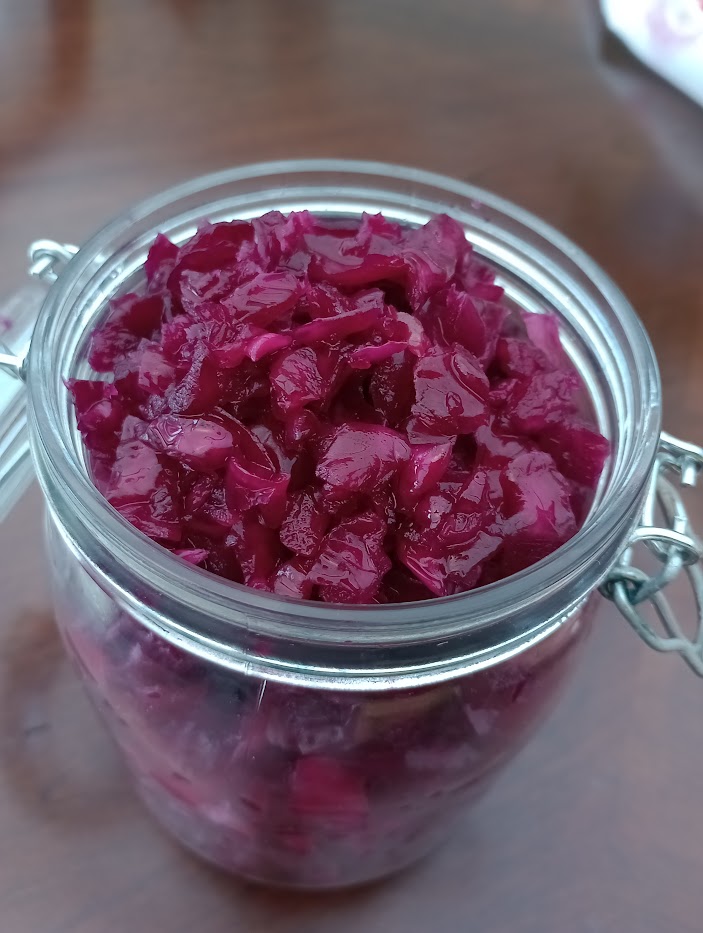Preserving The Harvest: Pickled Courgettes
If you’ve read our previous post ‘How to grow courgettes (zucchini)’ you will know we produced a lot of courgettes this year. Albeit less than some others but more than we were expecting! So what do you do when you have more than you can use? You make pickled courgettes!

Why do we pickle them?
Pickled courgettes have a taste and texture a lot like pickled cucumbers. They make a great zingy and cool addition to a sandwich or salad. Pickling is a type of fermenting process bacteria produce vitamins that can actually make fermented products better for you. It is also a great way to extend the shelf life of a fruit of vegetable (yes you can pickle fruit too!) and it makes for easy and convenient storage.
1. First you need to grab yourself a bunch of courgettes
Here’s a bunch of oddballs we grew on our own allotment!

now let’s preserve them!
2. Watch the video below (coming soon) or continue scrolling for the step by step (there is also a recipe card at the bottom of the page)
3. Step by Step
Prepare ingredients
- Measure out 600ml water
- Slice approx. 4 large courgettes into ribbons (I used a vegetable peeler for this).
- Clean and prep a 1 litre / 1000ml airtight jar.
- Collect 3-4 bay leaves (I used dried bay leaves)
- Measure 1 tsp dried dill or you can use a couple of sprigs of fresh dill
- Measure 2 tbsp Himalyan Pink Salt
- Measure 1/2 tsp Mustard Seed and 1/2 tsp of Coriander Seed
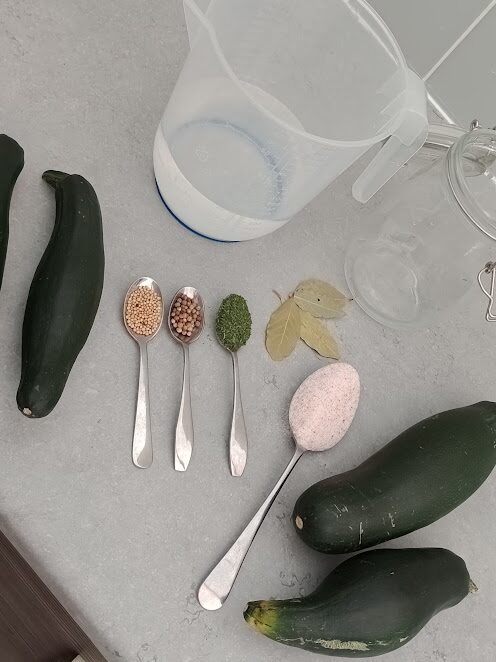
Place the seeds, dill and bay leaves in the bottom of the jar and begin to lay the courgette ribbons on top. Make sure you push them down relatively firmly.
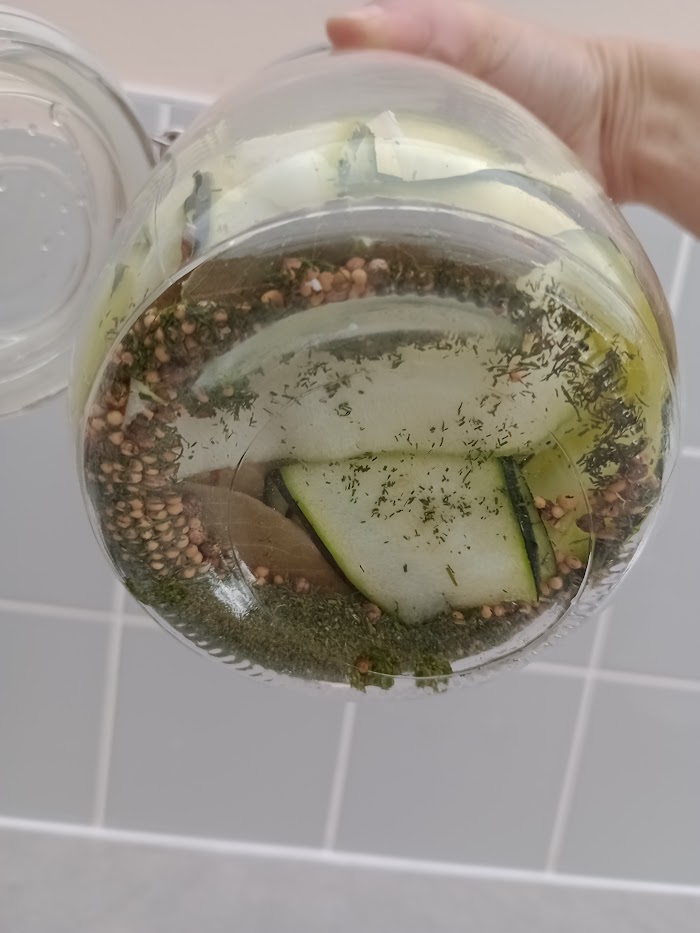
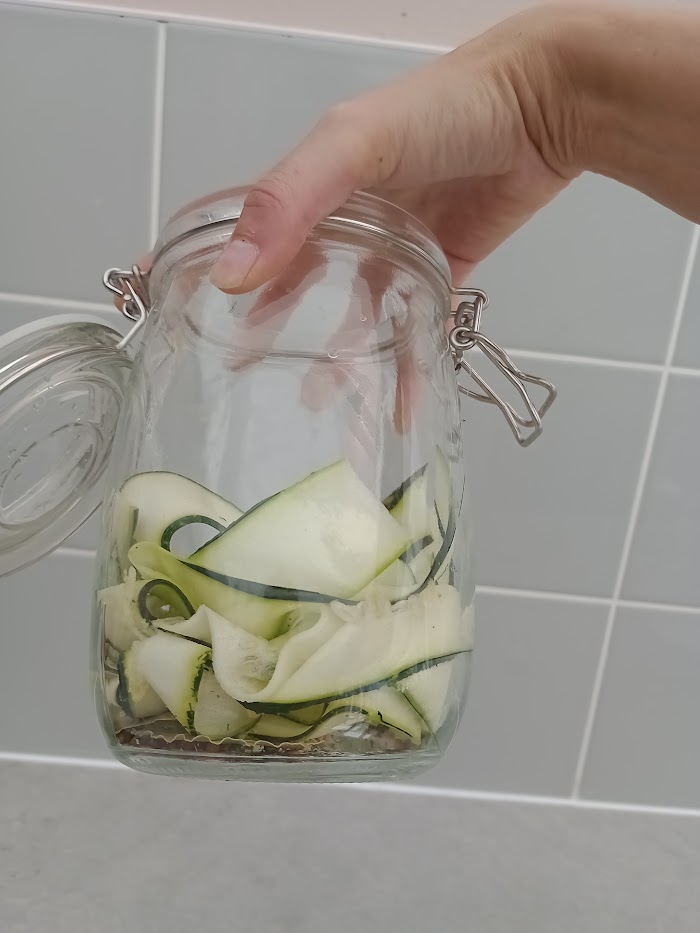
Fill the jar with the courgette ribbons leaving a few cm from the top of the jar. Make the brine by heating the water to a boil for 10 minuets to dissolve the salt.
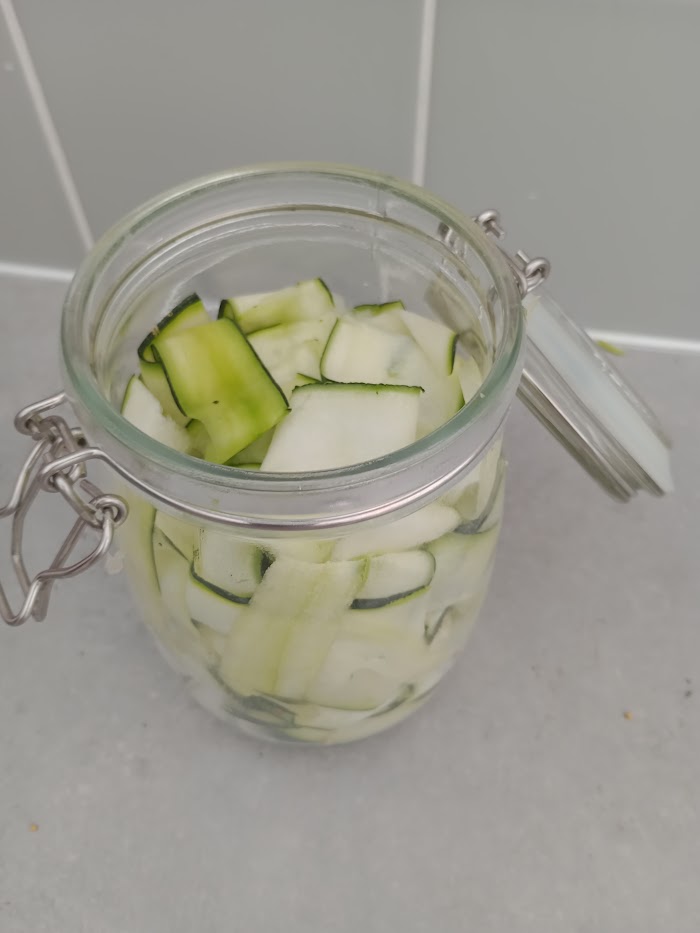
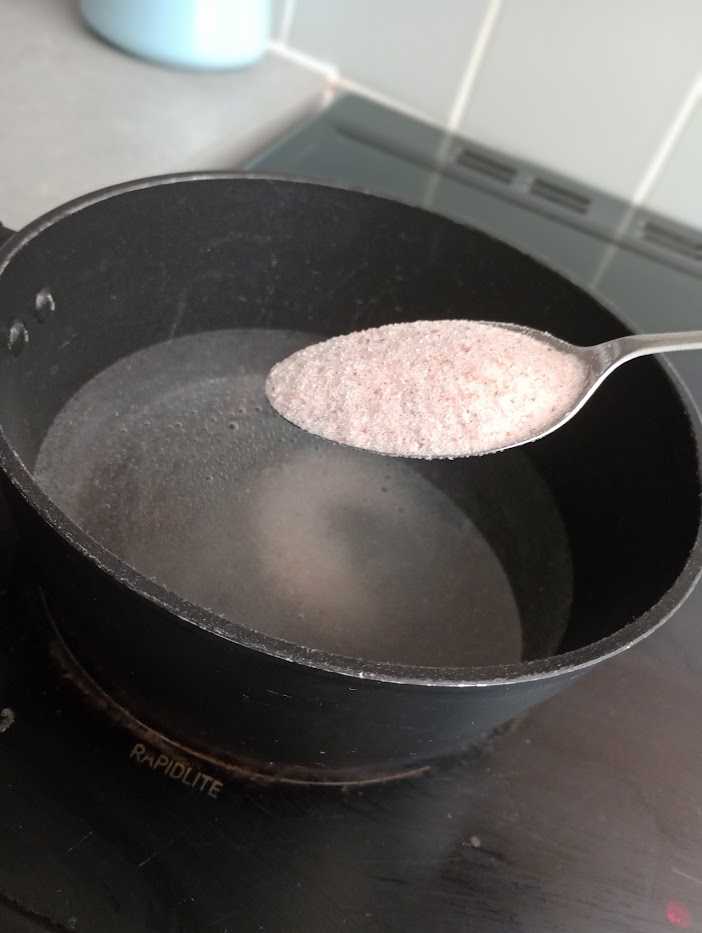
The brine is ready when all the salt has disappeared. Fill the jar with brine making sure to cover the courgette completely. You can use a tool to push down the courgette as it has a tendency to float. You can also buy jar weights (but I don’t have any of these at the moment). Slide a knife around the edges of the jar to release any air bubbles to the surface.
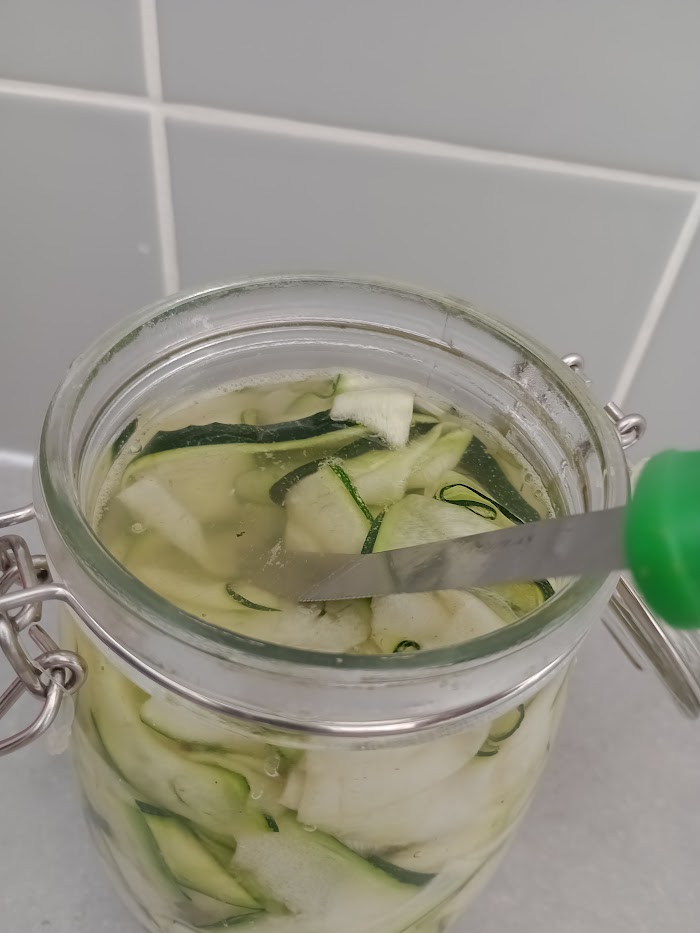
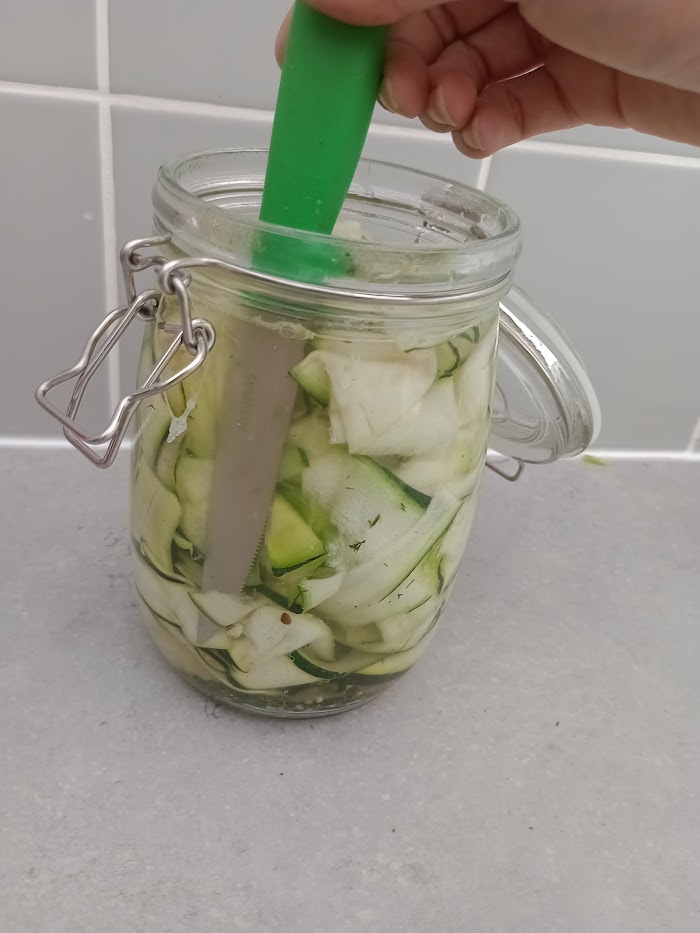
Seal the jar and leave at room temperature on a plate for 30 days. During this time the concoction might bubble over, this is normal just wipe the sides of the jar. The pickling process has finished when there are no more bubbles being produced. After a month the courgette ribbons are good to eat and should be kept in the fridge and eaten within a month. Longer if you know how to pressure or water bath can them.
4. Recipe card
